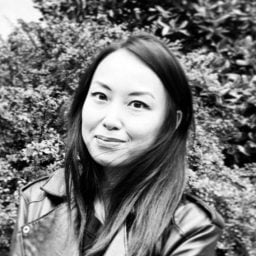Art & Exhibitions
Daniel Arsham’s Never-Before-Seen Photos Make Their Museum Debut
The sculptor's photographs are now on view at Fotografiska New York.
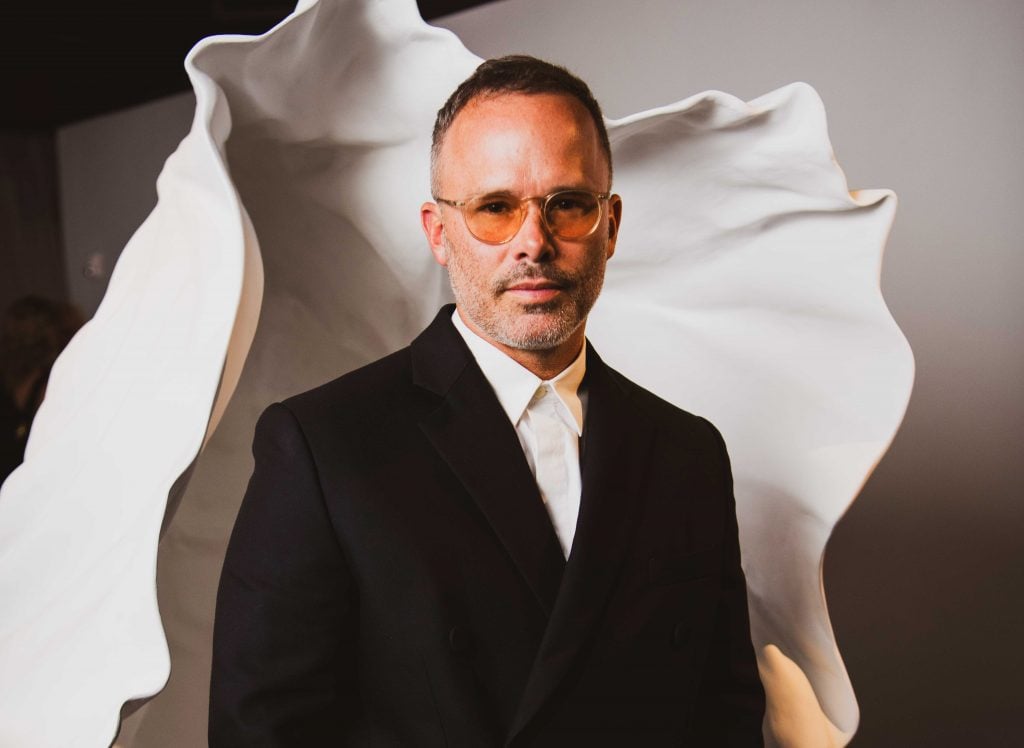
The 20 or so images now featured in Daniel Arsham’s first photography exhibition were never meant for our eyes. The sculptor had shot these photos purely for pleasure—amassing thousands upon thousands of them over three decades—never intending to put them on view. “I never thought about showing my photography,” he told me. “It was just what I was drawn to.”
We’re walking through “Phases” at Fotografiska New York, for which Arsham has disgorged his extensive archive, now numbering about 200,000 images across negatives and hard drives. “I had some crazy stuff that I had forgotten about,” he said. The mostly black-and-white photos in the show are thematically grouped: cityscapes in one section, portraits in another, and close-ups of birds in yet another.
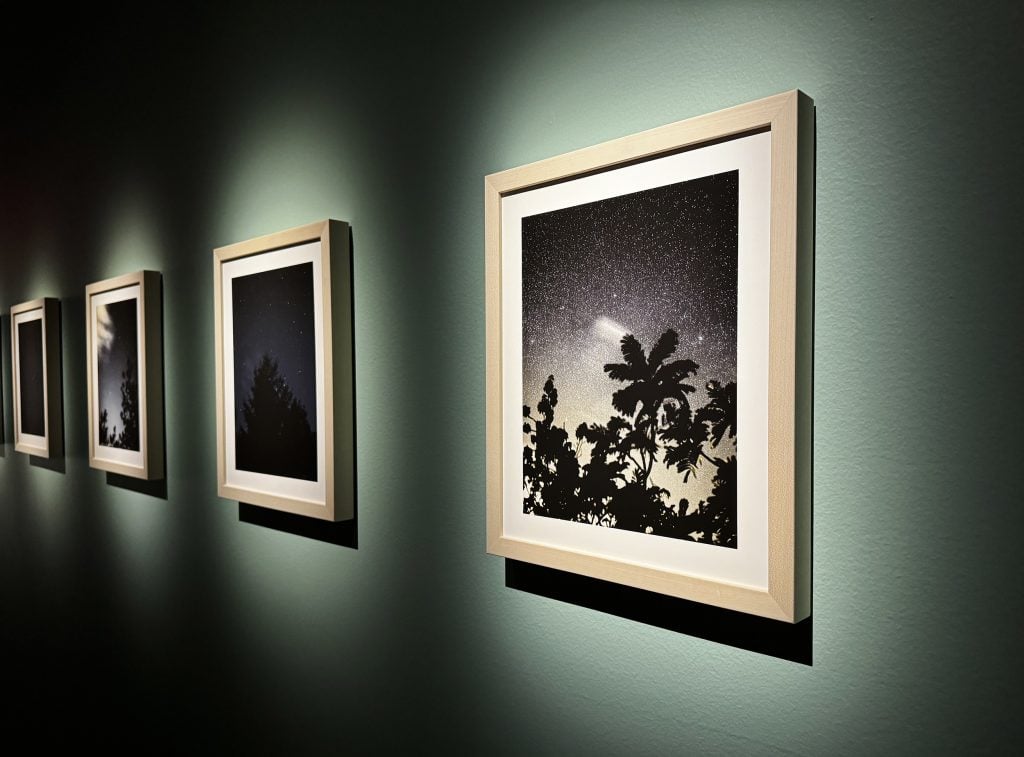
Installation view of “Daniel Arsham: Phases” at Fotografiska New York. Photo: Min Chen.
On one wall hangs a series of long exposures of the night sky, their stars crystal clear. Arsham explained that he shot some of these with the digital Leica M9 until a software update curtailed the shutter speed on bulb mode (he even fired off an email to the company about the issue). “So, I have now gone back to analog for that,” he told me, pointing to one photograph. “I think this exposure is, like, three minutes. You can even see the stars moving.”
This meticulously technical, almost geeky, approach to photography is long nurtured. Arsham received his first camera, a Pentax K1000, at age 11, a gift from his grandfather, who also taught him the basics of focus, shutter speed, aperture, and ISO. It launched a steady, lifelong pursuit that has run alongside his sculptural practice, built on his signature “eroded” forms.
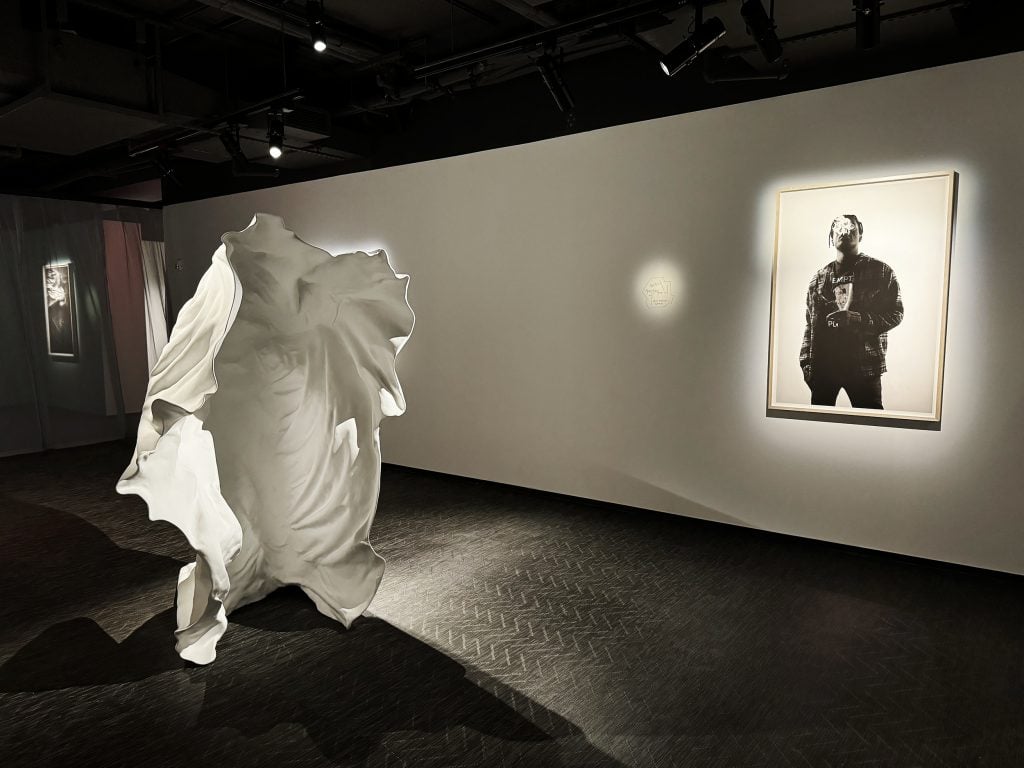
Installation view of “Daniel Arsham: Phases” at Fotografiska New York. Photo: Min Chen.
But while a handful of Arsham’s sculptures are dotted throughout the exhibition, he sees his photography work as separate. “It feels so different,” he said. “When I’m in the studio, I’m often working towards an exhibition and I’m creating a body of work with an intention around the full experience of the show. In this case [of photography], it’s more just playing.”
Still, the motifs in Arsham’s photographs do echo elements of his sculptures. One can see how his knack for dramatic framing and his eye for negative space might come into play in his studio. There’s even a smattering of photographs of sculptures, including one of the Winged Victory of Samothrace installed at the Louvre in Paris, each of them framed to emphasize their scale or textures.
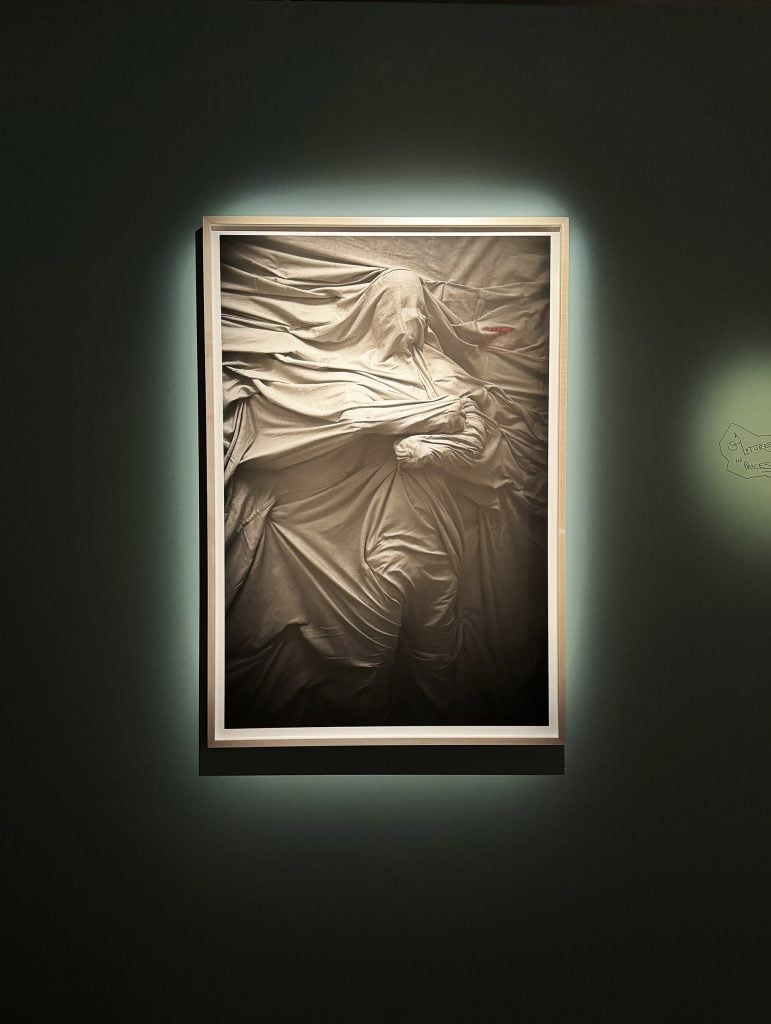
Installation view of “Daniel Arsham: Phases” at Fotografiska New York. Photo: Min Chen.
The exhibition is accompanied by the hardcover volume Daniel Arsham: Photographer—Arsham’s first photography book—its vast contents spanning street scenes, self-portraits, nature shots, casual snaps, and far more than is included in the show. Flipping through it, he points out various images: one of a sunrise as seen through some fog in Battery Park City where he once resided, a darkly silhouetted portrait of A$AP Rocky, and a perspective view of the Fushimi Inari Shrine in Kyoto, Japan.
Viewed as a body of work, one gets the sense that photography is as much a creative outlet as it is a personal project for Arsham. The book is dedicated to his late grandfather and its introduction, penned by the artist, discusses “using a camera to both document and understand life.”
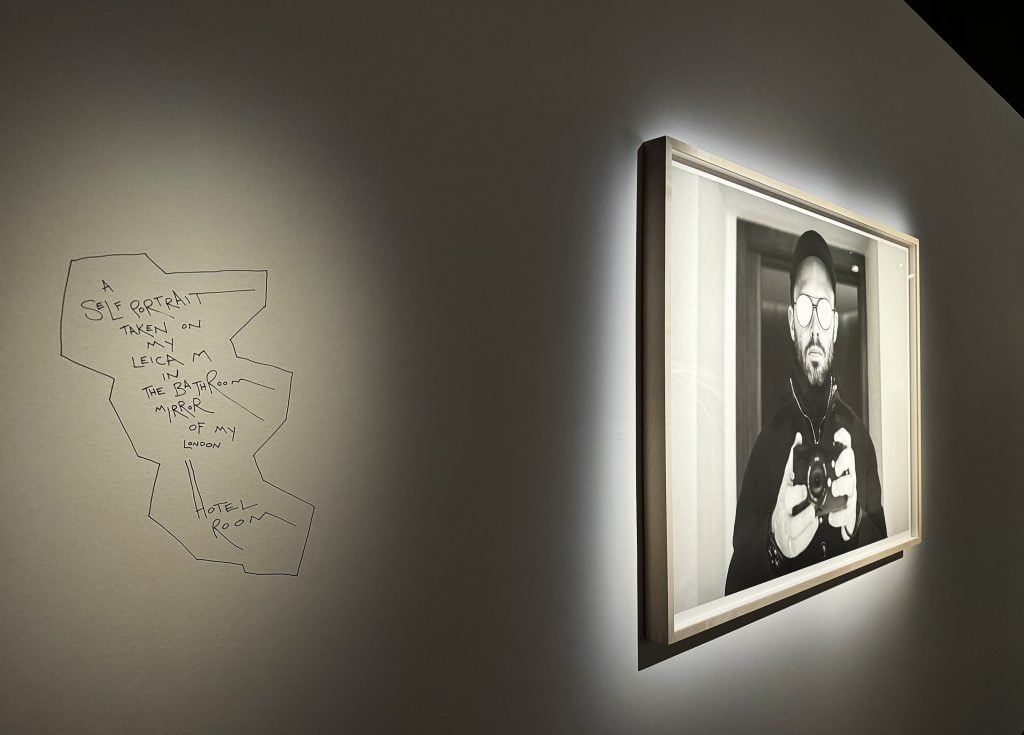
Installation view of “Daniel Arsham: Phases” at Fotografiska New York, with wall text handwritten by Daniel Arsham. Photo: Min Chen.
As he does in the book’s introduction, Arsham told me about receiving his first camera and turning it on the Miami suburb he grew up in. “The houses were basically the same, but the landscaping was different. People would paint their doors different colors and they had different door knockers,” he said. “So, I took photos of all the doors in the neighborhood—they’re all the same but they’re all different.”
He lost those images when Hurricane Andrew struck the neighborhood, wrecking his family’s home. What remained, however, was a photograph of a young Arsham posing alongside his beloved Pentax.
“It’s cool,” he said, showing me the image on the last page of Photographer. “I never thought that I would ever get to do an exhibition like this.”
“Phases” is on view at Fotografiska, 281 Park Ave South, New York, through June 14.

